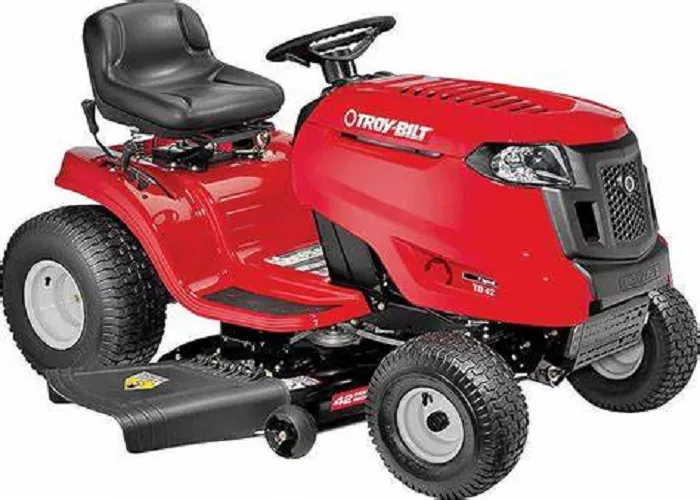When it comes to maintaining a healthy lawn, a reliable lawn mower is essential. Troy-Bilt is a well-known brand in the outdoor power equipment industry, offering a range of walk-behind and riding mowers designed for residential and commercial use. One of the most critical components of any lawn mower is its engine, as it directly impacts performance, durability, and efficiency.
Common Engine Brands Used in Troy-Bilt Mowers
Troy-Bilt does not manufacture its own engines. Instead, the company partners with leading engine manufacturers to equip its mowers with high-quality powerplants. The most common engine brands found in Troy-Bilt mowers include:
Briggs & Stratton
Intek Series: Found in many mid-range Troy-Bilt mowers, offering good power and fuel efficiency.
Professional Series: Designed for heavy-duty use, often seen in commercial-grade mowers.
ReadyStart Technology: Ensures easy starting with no priming required.
Kohler
Courage and Command Series: Known for durability and smooth operation.
Overhead Valve (OHV) Design: Improves fuel efficiency and extends engine life.
Honda
Honda engines are renowned for their quiet operation and fuel efficiency. While less common in Troy-Bilt mowers, some premium models may feature Honda engines.
How to Identify Your Troy-Bilt Mower’s Engine
Locate the Engine Model and Serial Number
- On the engine block (near the spark plug or oil fill cap).
- On the side or top of the engine shroud.
Check the Mower’s Manual or Product Label
If you still have the owner’s manual, it will list the engine specifications. Alternatively, the mower’s product label (usually under the seat or on the frame) may include engine details.
Use Online Resources
Visit the Troy-Bilt website and enter your mower’s model number to find engine specifications. Alternatively, search for your mower’s model followed by “engine type” in a search engine.
Key Engine Specifications and Features
Horsepower (HP) and Torque
Residential Mowers: Typically 140cc to 190cc, producing 4.5 to 7 HP.
Commercial Mowers: Can exceed 10 HP for heavy-duty cutting.
Engine Displacement (cc)
Larger displacement generally means more power but may reduce fuel efficiency.
Fuel Type
- Unleaded gasoline (87 octane or higher).
- Some models may support ethanol blends (up to E10).
Oil Type and Capacity
SAE 30 or 10W-30 is common for most engines.
Capacity: Typically 18-20 oz (check your manual for exact specs).
Starting Mechanism
Recoil (Pull-Start): Common in entry-level models.
Electric Start: Found in premium models, often with a battery.
Maintenance Tips for Optimal Performance
Regular Oil Changes
- Change oil every 50 hours or at least once per season.
- Use the recommended oil grade.
Air Filter Maintenance
Clean foam filters with soapy water; replace paper filters when dirty.
Spark Plug Inspection
- Replace annually or every 100 hours.
- Ensure proper gap (typically 0.030 inches).
Fuel System Care
- Use fresh gasoline; avoid long-term storage with fuel.
- Add a fuel stabilizer if storing for more than 30 days.
Troubleshooting Common Engine Issues
| Issue | Possible Cause | Solution |
|---|---|---|
| Engine won’t start | Old fuel, clogged carburetor, faulty spark plug | Drain old gas, clean carburetor, replace spark plug |
| Engine runs rough | Dirty air filter, bad fuel, incorrect oil level | Clean/replace filter, use fresh gas, check oil |
| Engine overheats | Clogged cooling fins, low oil | Clean engine area, refill oil |
| Loss of power | Dull blade, clogged fuel line | Sharpen/replace blade, inspect fuel system |
Upgrading or Replacing Your Mower’s Engine
- Rebuilding the existing engine (cost-effective if parts are available).
- Installing a compatible replacement engine (ensure matching HP and shaft size).
- Upgrading to a higher-performance engine (check mounting compatibility first).
Conclusion
The engine in your Troy-Bilt mower plays a crucial role in its performance and longevity. By understanding the engine type, maintaining it properly, and addressing issues promptly, you can ensure years of reliable service. Whether your mower has a Briggs & Stratton, Kohler, or Honda engine, following the guidelines in this article will help you keep it in top condition.
For further assistance, always refer to your owner’s manual or consult a professional small engine technician. A well-maintained mower engine not only cuts grass efficiently but also saves you time and money in the long run.

